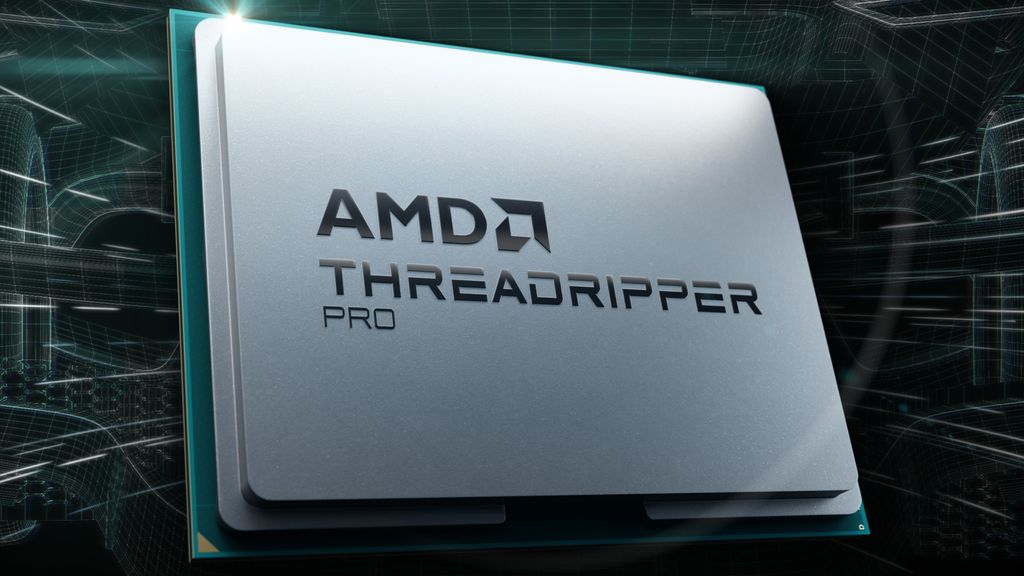
(Image credit: AMD)
Although AMD formally introduced its Ryzen Threadripper 9000-series processors at Computex and disclosed their specifications, the company did not reveal their performance compared to predecessors and rivals, or their pricing. This week, the company filled in one of these blanks and finally released performance results of its Ryzen Threadripper Pro 9995WX and Ryzen Threadripper 9980 CPUs compared to Intel's Xeon W9-3595WX.
With its Zen 5-based Ryzen Threadripper 9000-series, AMD did not increase core count or frequency of its CPUs for workstations and high-end desktops, so all performance increases compared to the previous generation come from micro-architectural improvements (e.g., wider core execution, improved caches, faster memory, and more efficient AVX-512 support).
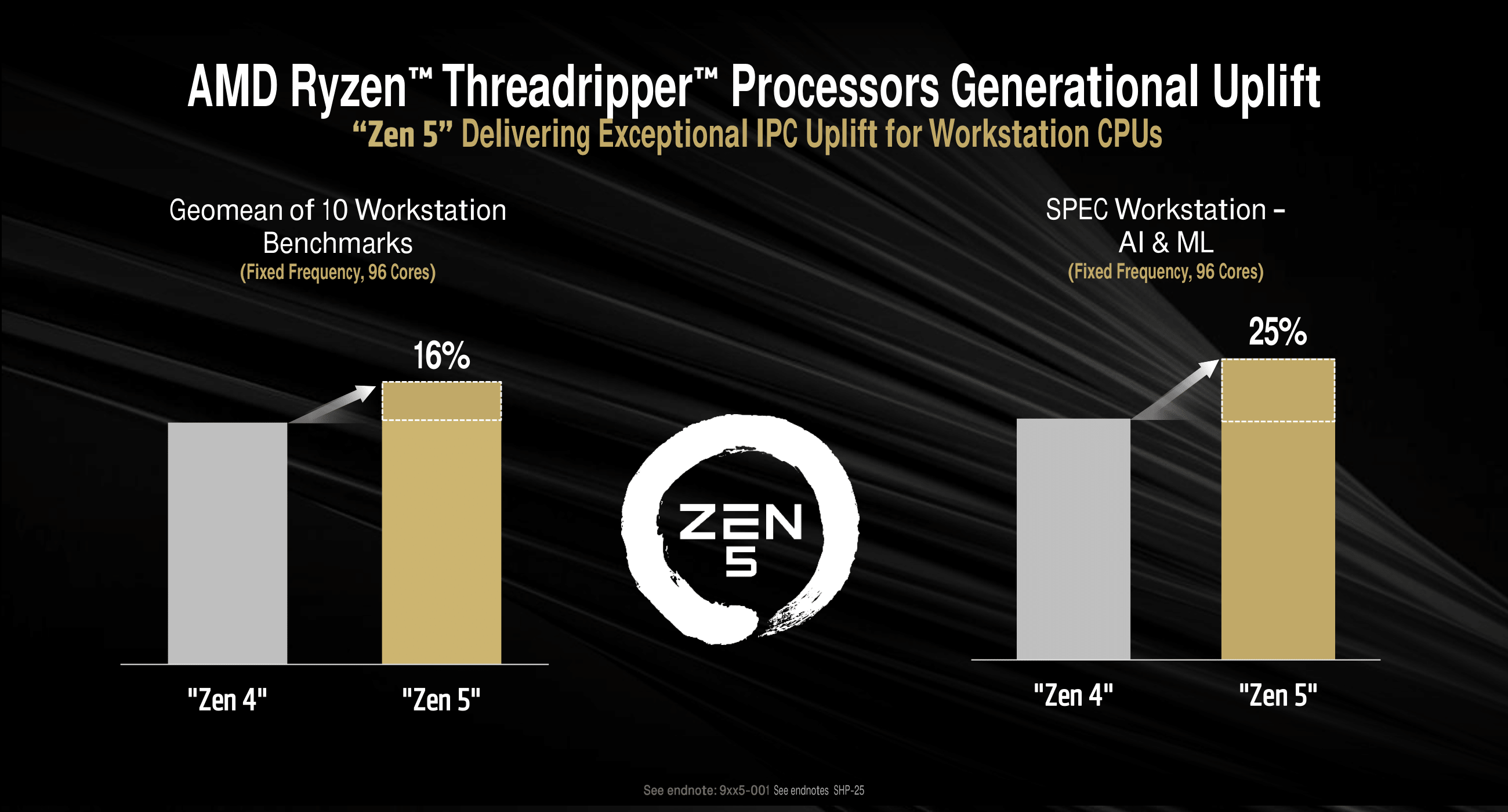
(Image credit: AMD)
AMD itself claims that its new Ryzen Threadripper 9000-series CPUs are 16% faster in workstation applications and up to 25% faster in AI/ML workloads when compared to predecessors with the same core count and clocks, which is in line with what we would expect from Zen 5-powered products. More detailed results indicate that the 96-core Ryzen Threadripper Pro 9995WX is 13% to 26% faster in workstation benchmarks and 22% to 23% faster in DeepSeek R1 compared to its direct predecessor, the 96-core Ryzen Threadripper Pro 7995WX.
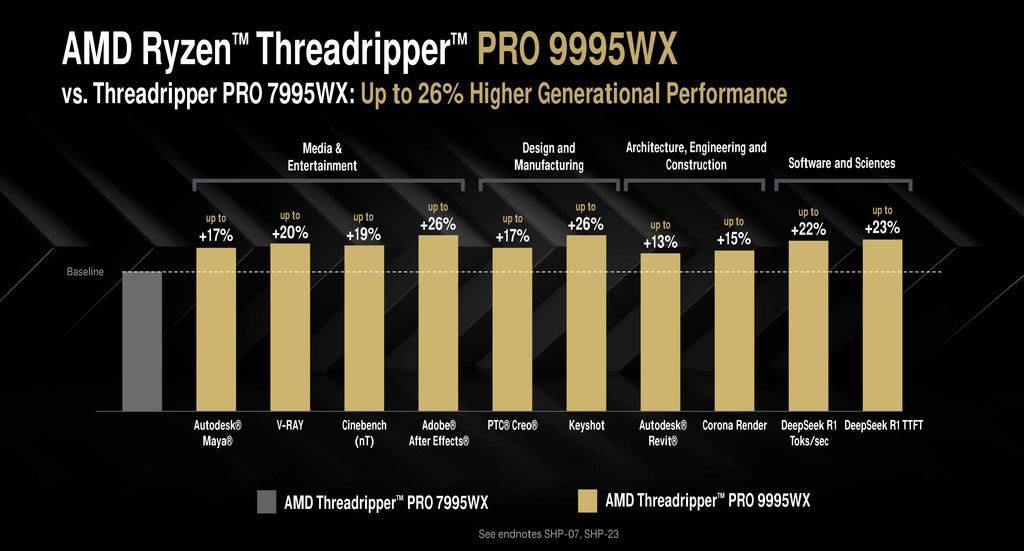
(Image credit: AMD)
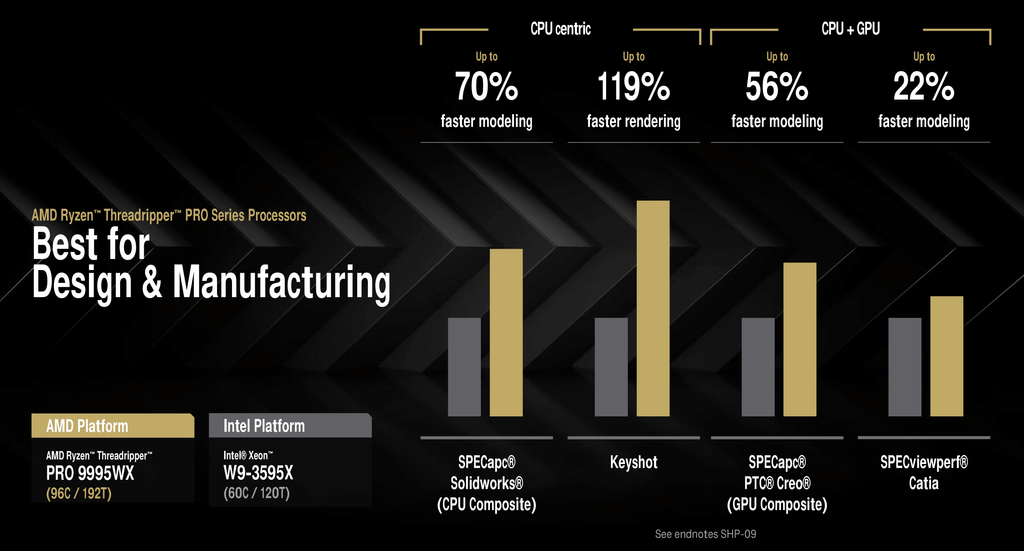
(Image credit: AMD)
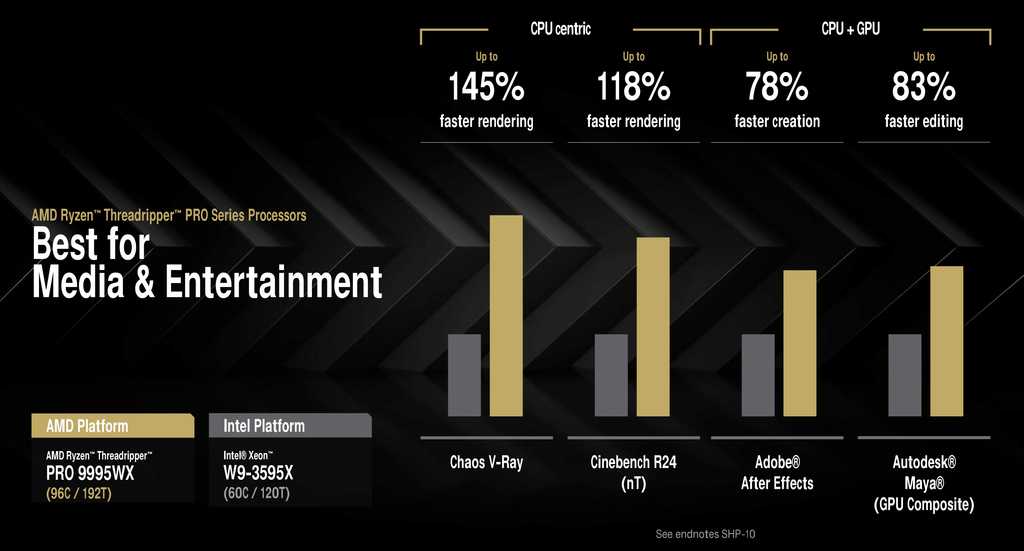
(Image credit: AMD)
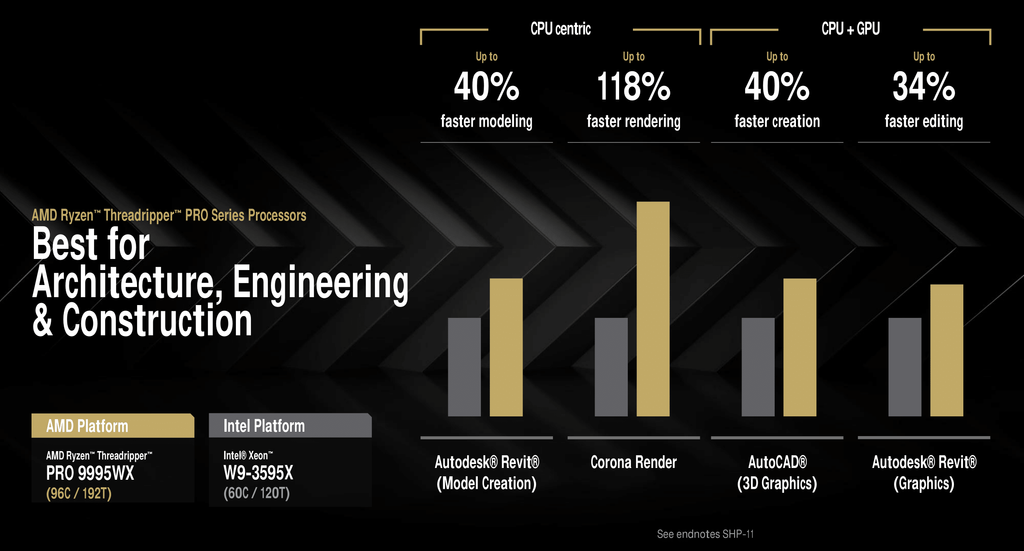
(Image credit: AMD)
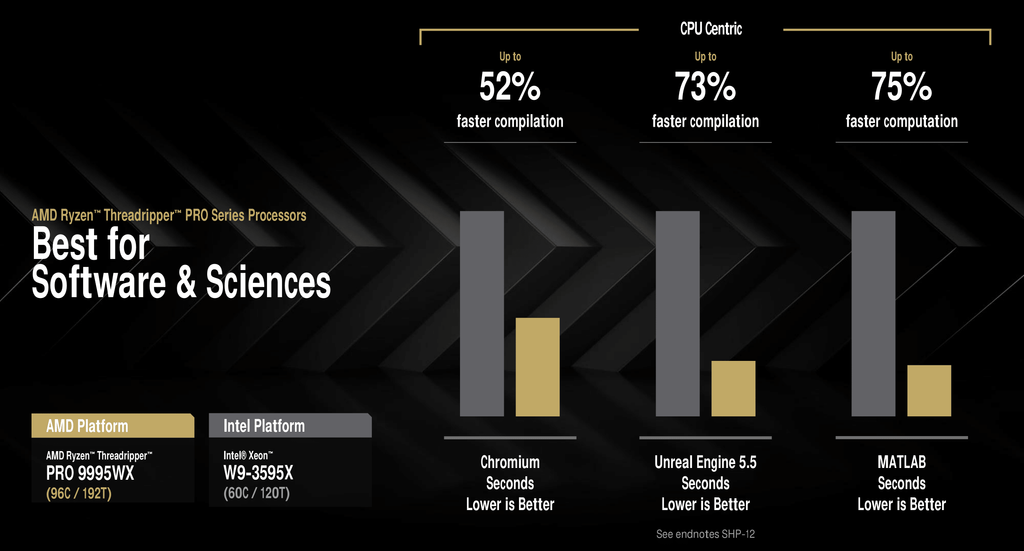
(Image credit: AMD)
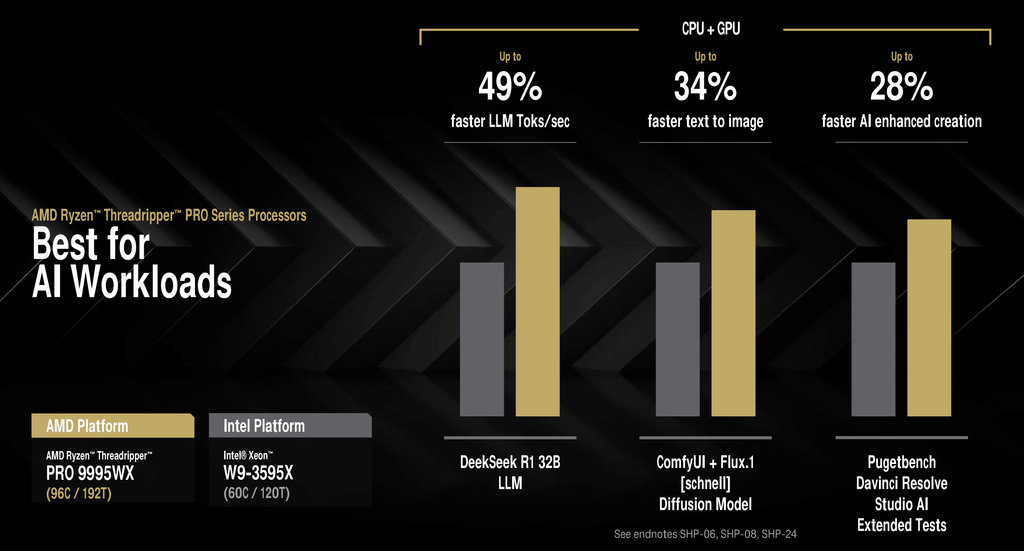
(Image credit: AMD)
Performance comparison of AMD's new flagship with its rival from the blue camp looks more impressive, as with 96 cores and 192 threads, it outpaces Intel's 60-core Xeon W9-3595X by 28% to 145%, depending on the task, across every major professional workload. Of course, the tests were conducted by AMD, so take them with a grain of salt.
In content creation and rendering (e.g., V-Ray, After Effects, Maya), AMD's lead is particularly dominant, with improvements often exceeding 100%. In CAD, AEC, and simulation-heavy applications like Solidworks, Revit, and Keyshot, AMD maintains a commanding advantage, offering faster modeling and rendering across the board.
Software compilation, scientific computing (MATLAB, Chromium, Unreal Engine), and AI workloads (LLM inference, diffusion models) also benefit from Ryzen Threadripper's wider memory interface, larger caches, and more threads, with performance uplifts between 28% and 75%. Although Intel's Xeon W9-3595X CPU can shrink its gap with AMD's offering to 22% to 34% in some cases, the Ryzen Threadripper Pro 9995WX leads in all tests conducted by AMD.
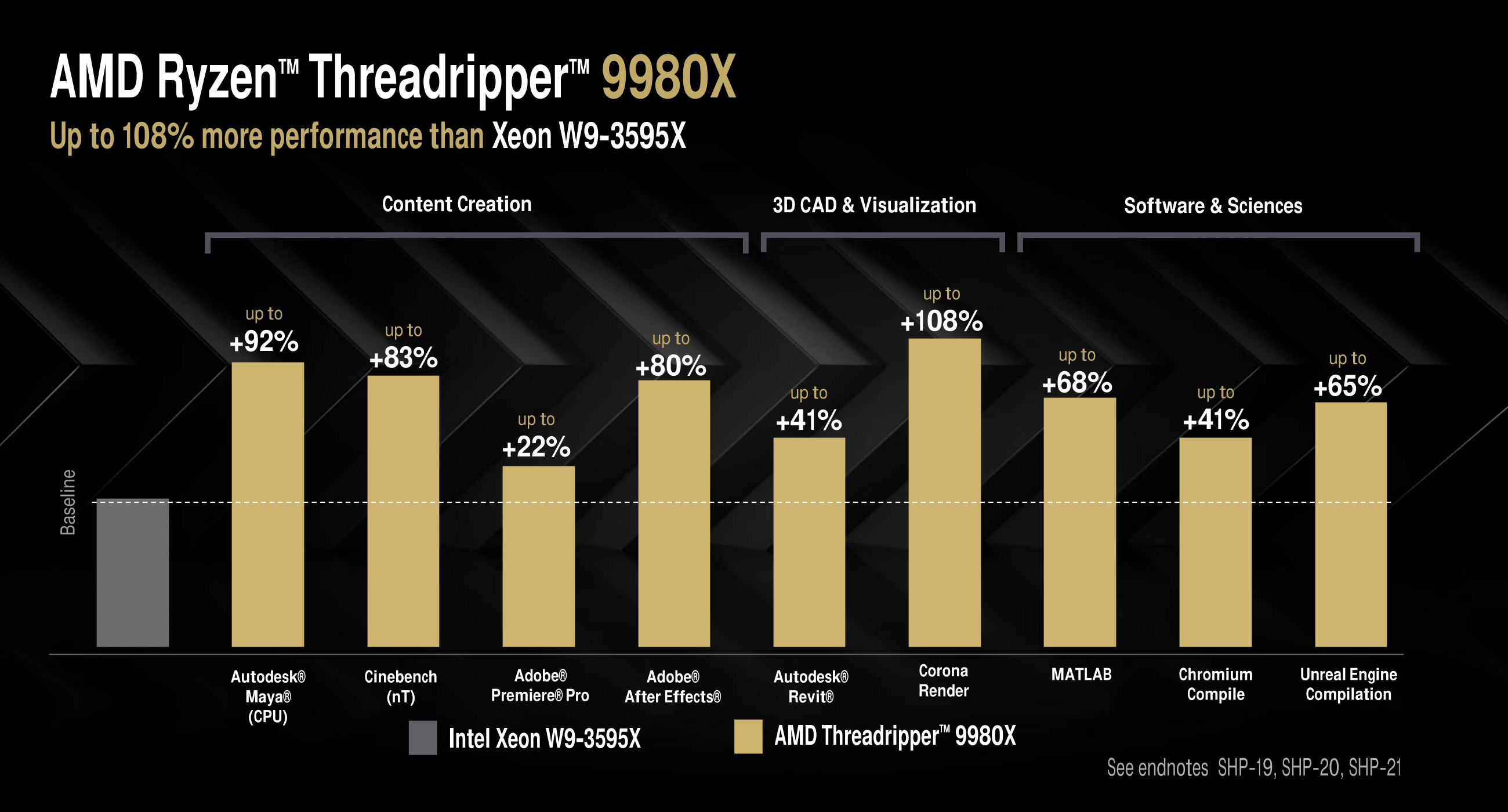
(Image credit: AMD)
AMD's 64-core Ryzen Threadripper 9980X with a quad-channel memory subsystem is designed for high-end desktops (HEDT), which are not exactly workstations (though prices of some of such machines exceed that of many workstations). Nonetheless, the CPU beats Intel's Xeon W9-3595X in all workstation workloads by up to 108%.
In content creation tasks, the non-Pro Threadripper 9980X shows major advantages over its Xeon counterpart: up to 92% faster in Autodesk Maya, 83% in Cinebench (nT), 22% in Adobe Premiere Pro, and 80% in Adobe After Effects. In CAD and rendering, AMD's CPU beats its rival by 41% - 108%. In software development and scientific workloads, the Ryzen Threadripper 9980X offers up to 65% faster compilation in Unreal Engine and 68% faster computation in MATLAB.
While we should naturally take benchmark results published by hardware developers with some scepticism, it looks like AMD's Ryzen Threadripper 9000-series processors will indeed be faster than their competitors in heavy-duty workstation workloads due to higher core count and enhanced memory subsystems. Perhaps the biggest question about these new Threadripper CPUs is how much they will cost. Since these processors will likely be unrivalled in terms of performance, AMD may set almost any prices on them, making these products accessible to few workstation users with deep pockets.
Follow Tom's Hardware on Google News to get our up-to-date news, analysis, and reviews in your feeds. Make sure to click the Follow button.

-
 C114 Communication Network
C114 Communication Network -
 Communication Home
Communication Home


